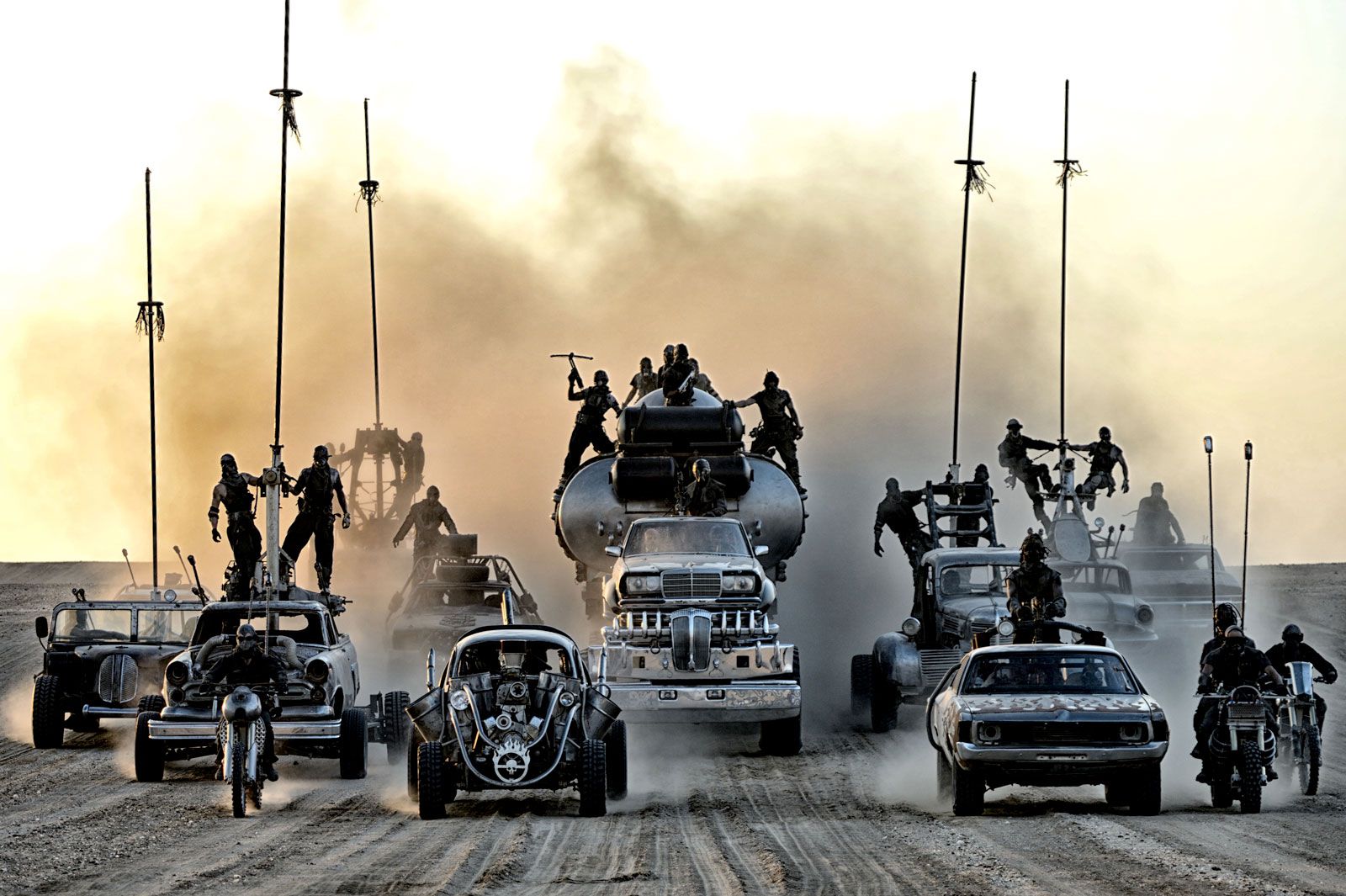Mad Max is one of those
franchise/reboots that manages to surprise its audience. Marvel has cornered
the market on competent franchise filmmaking. DC is attempting to follow in
Marvel’s footsteps, but by positioning itself as the “serious” comic book movie
series—as if all-powerful alien and a billionaire vigilante are somehow too
highbrow for humor. As studios invest more and more into serialized filmmaking,
the movies themselves become a means to end, rather than an end in themselves. MacGuffins
populate the Marvel movies, each one a precisely planned piece of a plot
puzzle. In the recent Avengers movie, the mention of the Infinity Stones,
presaging Marvel’s Phase Three is more eye rolling than enticing. Tell this
story, not the next four (Avengers: Infinity War due out in 2018!). Mad Max: Fury Road, a reboot of the Mel
Gibson/George Miller franchise, offers unrelenting entertainment and spectacle.
Apart from a brief introduction and interlude, the film is a non-stop chase
sequence, brilliantly shot and choreographed.
Unlike many other franchise movies, Miller’s visuals show the audience
the story, rather than relying on its characters to tell it.
| Even the posters look awesome. |
Miller
has presented a gorgeous and colorful post-apocalyptic landscape. Dystopian and
post-apocalyptic film fare generally feature muted landscapes and color
palettes, immersing the audience in a dark and dreary future. Instead the sun
glitters off the desert and convoys of death cars. Relying primarily on
practical effects, Miller swings soldiers atop long poles, in and out of the
camera’s view, as they rein fire from above. Cars flip over, explode, and
barrel relentlessly forward. There’s even a guy playing a gigantic guitar that
shoots out flames. Another vehicle carries a squad of drummers, driving home
the sense of unrelenting action. In one sequence, a storm envelops the chasing
cars. Blinding sands give way to dark blue lightning in a stunning array of
color. The film cuts quickly through the action, but never in the incoherent
way that characterizes Michael Bay’s recent filmography. There are a few
moments of glaringly obvious CGI, but nothing on the scale of other recent
blockbusters (I’m looking at you Peter Jackson). Miller uses the desert oasis
that bookends the film to visually demonstrate how power works in this future:
gigantic wheels and machines bring water from the earth, providing hope for a
desperate populace and power to the man who controls it.
 |
| The chase is on.... |
The
film’s plot is straightforward and the dialogue sparse. Characters rarely speak
more than a few words and almost never call each other by name. Charlize Theron
plays Imperator Furiosa, a soldier in service of Immortan Joe, the deluded and
tyrannical leader of a colony of survivors in a post-apocalyptic Australia. Joe
yields power through his control of natural resources and has built himself a
cult of personality that would make Stalin jealous. His people view him as a
God, giver of water and life. The women of his world, Furiosa and a group of
five of his wives, see through the façade. They compose and execute an escape
plan. As Furiosa escapes with the wives in tow, another of Joe’s soldiers,
played by Nicholas Hoult, uses the recently captured Max (Tom Hardy) and his
blood to fuel the pursuit. Hardy and Theron are the standouts in the film. With
so little dialogue, Miller relies on the ability of this pair of actors to
bring their characters to life through their physical performances. Theron’s
face conveys her character’s determination and deep psychological scars. Hardy
similarly demonstrates Max’s psychological break following his inability to
save his family. What follows is a story of escape and redemption told through
furious and unremitting action.
| Yes, that's a man playing a flaming guitar. |
Mad Max presents fully realized female
characters without having to justify them. Their power is ingrained and assumed
in this world. Immortan Joe treats his women as property, the film doesn’t.
They are Joe’s victims and they’re not going to take it anymore. Miller’s
vision doesn’t have room for passive women who need the guidance or leadership
of a man. As the film reaches its climax, the final confrontation involves Max,
Furiosa, and a gang of women against Joe’s army. There are no speeches
reminding the women of their power. They don’t need them. They don’t need to
prove themselves to anyone. Miller makes this point by showing the audience
these women’s power. Furiosa demonstrates her skills by destroying her enemies.
She and Max trade blows and the wheel of their war machine without outshining
each other. The other women have their moments as well. highlighted by the
female motorcycle gang that helps bring the film to a close. Instead of simply
making an argument for female empowerment, Miller clearly demonstrates it
through the actions of his characters.
Through
its stunning visual effects and effective lead performances, Miller grabs hold
of the viewer and never lets go. He revels in the spectacle of the film and we
are all the better for it.

No comments:
Post a Comment